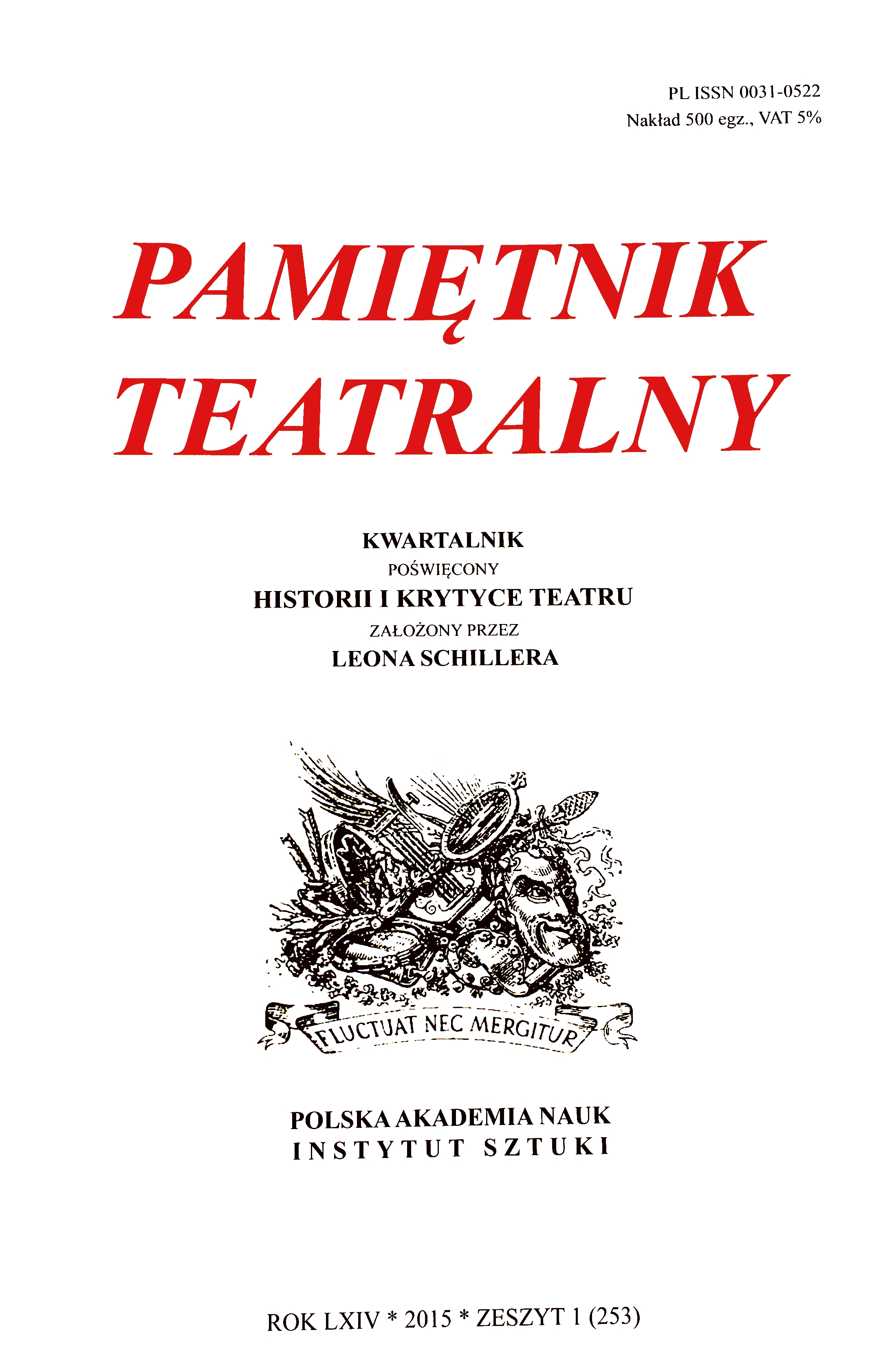Fenomenologia przedstawienia
Phenomenology of Theatre Performance
Author(s): Włodzimierz SzturcSubject(s): Theatre, Dance, Performing Arts
Published by: Instytut Sztuki Polskiej Akademii Nauk
Keywords: theatre theory;theatre studies;phenomenology;
Summary/Abstract: In his article, the author examines the possibility of undertaking a new way of conceptualising the theatre performance, the way defined as phenomenological theatrology. Admittedly, the methods and tools of phenomenology in reference to theatre have been discussed in theatre studies several times. Such reflexion drew inspiration from Roman Ingarden’s theory of the literary work of art (more often) and (less frequently) from his theory of the theatrical piece. Ingarden’s philosophy was discussed and applied only selectively, with emphasis on the so-called stratification of the work of art (Stefania Skwarczyńska, Sławomir Świontek, Tomasz Kubikowski), even though its influence made itself apparent in the way that the structure of perception was appropriated for the so-called “aesthetic situation” by Maria Gołaszewska or in the way drama theory was set in the context of Roman Ingarden’s theory of theatre as consti-tuting the multi-material works of art (Janina Makota). For many reasons, the author believes that a more comprehensive reflexion on the phenomenology of the theatrical piece has been brought by works reporting the state of phenomenological research on the spectacle (Małgor-zata Różewicz) or by synthetic studies of the whole oeuvre of the Polish phenomenologist that treat it as one of the key areas of cognition left by the 20th-century Polish aesthetic thought, with an epistemological import as well (Irena Sławińska). An important contribution of phenomenology as a “truly scientific philosophy” to the study of spectacle was the theory of perception (Merleau-Ponty’s phenomenology of commu-nication), the fact recently brought to attention by Dobrochna Ratajczak. What serves as its foundation is the intentionality indicating the model of experiencing the theatrical piece (a priori, but in relation to the subject’s intuition, stimulated by exposure to the work of theatre) where the piece is made up of unconcretised entities reduced to their basic sense that are be-ing further determined in the process of perception of the whole work. This point of view is, according to the author, just a prologue to constructing the communicative situation but it is not the proper ground for phenomenology itself as directed to cognition of the theatrical piece in all of its different shapes, including public rehearsals and various forms of performances. In devising his project of phenomenology of theatre performance (not “spectacle” or “theatrical piece”), the author harks back to the source texts by Edmund Husserl and Martin Heidegger (and, thus, omits the reflexions of Ingarden as insufficient for the study of theatre) and delineates a methodological model consistent with the programme of going “back to the things themselves” (without resentments, presuppositions, and interpretations) and based on the principle of intuition as a viable way of describing a performance that dictates its own order. Phenomenology of theatre performance starts out with cognition of the thing itself “given to watch” which, “unfolding before the viewer”, constitutes itself as a schema of the phenomenon that is being concretised as the experience progresses. In the profound study of Husserl’s methodology lies the key to restoring theatrology as a descriptive science laying foundations for the study of theatre as an a posteriori science based on a phenomenologically understood analysis of theatre performance.
Journal: Pamiętnik Teatralny
- Issue Year: 253/2015
- Issue No: 1
- Page Range: 32-47
- Page Count: 16
- Language: Polish

